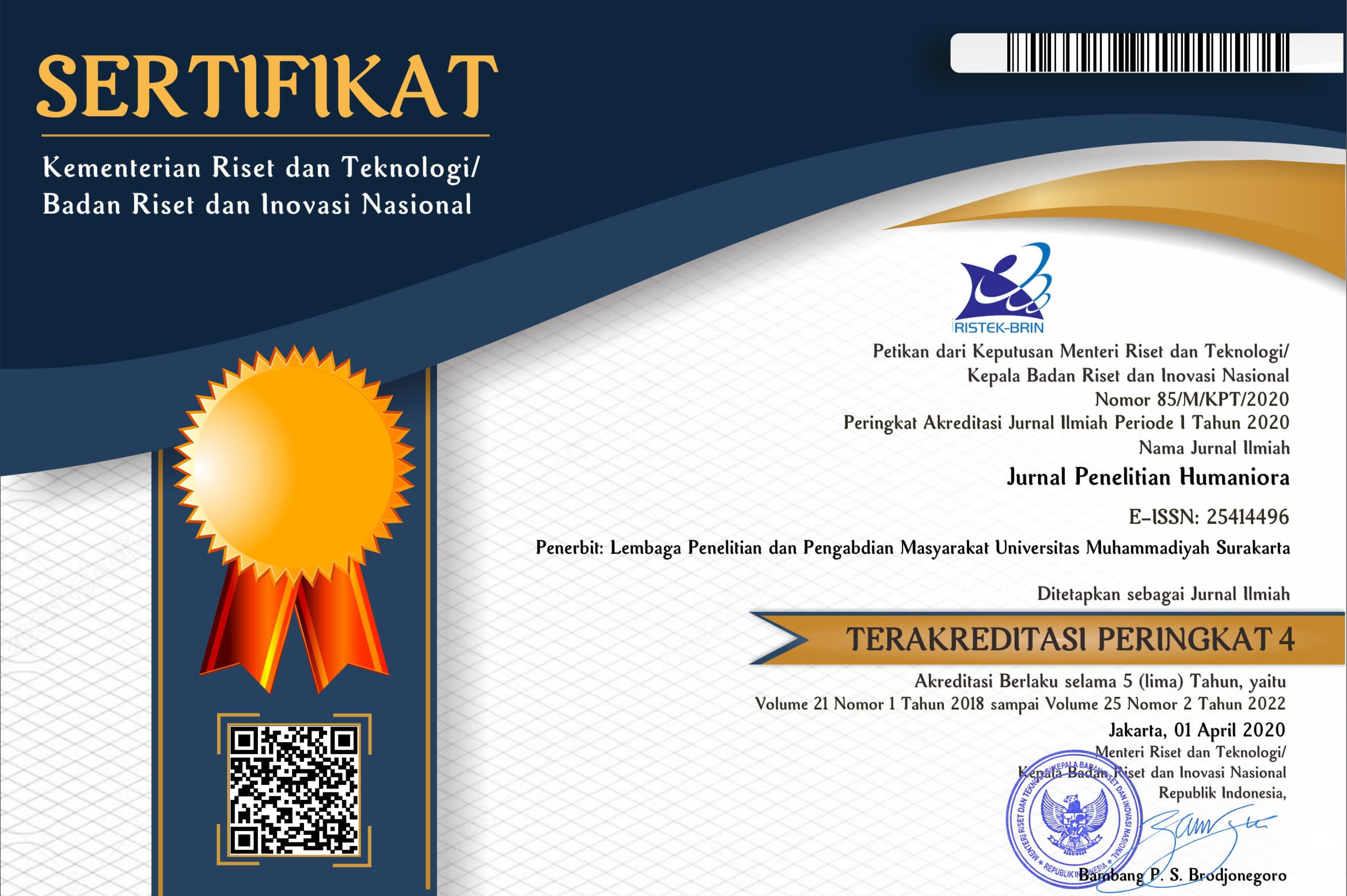INTERLINGUAL ERRORS AND INTRALINGUAL ERRORS FOUND IN NARRATIVE TEXT WRITTEN BY EFL STUDENTS IN LAMPUNG
Eny Maulita Purnama Sari(1*)(1)
(*) Corresponding Author
Abstract
out; (1) the types of interlingual errors and intralingual errors in Junior High School, Senior High School and University, (2) the frequencies of interlingual errors and intralingual errors in Junior High School, Senior High School and University, and (3) the similarities and differences of interlingual errors and intralingual errors in Junior High School, Senior High School and niversity. The researcher used Qualitative descriptive as the method design and writing test as the data collecting technique. The data was erroneous sentences found in the students’ narrative writing. The subjects of the study comprised 30 eight grade of SMP Muhammadiyah Pekalongan, East Lampung and 30 eleven grade SMKN 1 Pekalongan, East Lampung, and 30 fourth-year students of English Department of University of Muhammadiyah, Metro Lampung. The findings of the study suggest: (1) The types of interlingual errors and
intralingual errors made by SMP, SMK and University students divided into 2 levels, they are morphological level and syntactical level. (2) the frequent of interlingual errors in Junior High School 36 cases (30.26%), in Vocation High School 39 cases (36.77%) and 9 cases (10.98%) in University. The frequent of intralingual errors in Junior High School 83 cases (69.74%), in Senior High School 70 cases (64.23%) and 73 cases (89.02%) in University, and (3) The similarities of interlingual errors and intralingual errors found in Junior High School, Vocation High School and University are 2 types. In morphological level, they are the use of L1 structures and omission of BE in nominal sentences. There are also 2 types in syntactical level, they are the use of present BE in past event and the use of present Verb in past event. The differences
of interlingual errors and intralingual errors found in SMP, SMK and University are (1) in SMP there are 8 types errors that found in the students’ writing, (2) 3 types of errors in SMK, and (3) 2 types of errors found in University.
Full Text:
PDFReferences
Al- Khresheh, M.H. 2010. Interlingual Interference in English Language Word Order structure of Jordanian EFL Learners. Proceedings of the European Journal of Social Sciences-Volume 16, Number 1.
Brown, H, Douglass. 1980. Principles of Language Learning and Teaching, New Jersey: Prentice Hall Inc.
Brudhiprabha, P. 1972. Error analysis: a psycholinguistic study of Thai English compositions.
Thesis (M.A.): McGill University Chelli, Saliha. 2013. Interlingual and Intralingual Errors in the Use of Preposition and Articles. As retrieved from http://dspace.univ-biskra.dz:8080/jspui/bitstream/123456789/3571/1/
Interlingual%20or%20Intralingal%20Errors%20in%20the%20Use%20of%20
Preposition.pdf
Chomsky, Noam.1998. Minimalist inquiries: the framework. MIT OPL 15. Dept.of linguistics,
MIT.
Corder, S.P. 1981. Error and an Interlanguage. London: Oxford University.
Corder, S.P. 2000. Error Analysis. London: Longman Publisher.
Corder. S,P. 1974. Error Analysis: Perspective on second language acquisition. London. Longman.
Ellis, Rod. 1997. SLA Research and Language Teaching. Oxford: Oxford University Press.
Falhasiri, Mohammad. 2011. “The Effectiveness of Explicit and Implicit Corrective Feedback on Interlingual and Intralingual Errors: A case of Error Analysis of Students’ Compositions”. Proceedings of the English Language Teaching. Volume 4, Number 3.
Fauziati, Endang. 2009. Readings on Applied Linguistics: A Handbook for Language Teacher and Teacher Researcher. Surakarta: Era Pustaka Utama
George, H.V. 1972. Common errors in language learning. Rowley: Massachusetts.
James, C. 1998. Errors in language learning and use: Exploring error analysis. New York: Longman.
Lado, R. 1964. Language Teaching: A Scientific Approach in Students’ Text. McGraw-Hill: USA.
Richard, J, C. 1974. Error Analysis: Perspective on Second Language Acquisition. London: Longman Group Ltd.
Solano, Paola Alexandra Cabrera. 2014. Spanish Interference in EFL Writing skills: A case of Ecuadorian Senior High Schools. Canadian Center of Science and Education. Vol. 7 No. 7.
Touchie, Hanna. 1986. Second Language Learning Errors Their Types, Causes, and Treatment. Proceedings of the JALT Journal-Volume 8, Number 1
Article Metrics
Abstract view(s): 9089 time(s)PDF: 28825 time(s)
Refbacks
- There are currently no refbacks.











